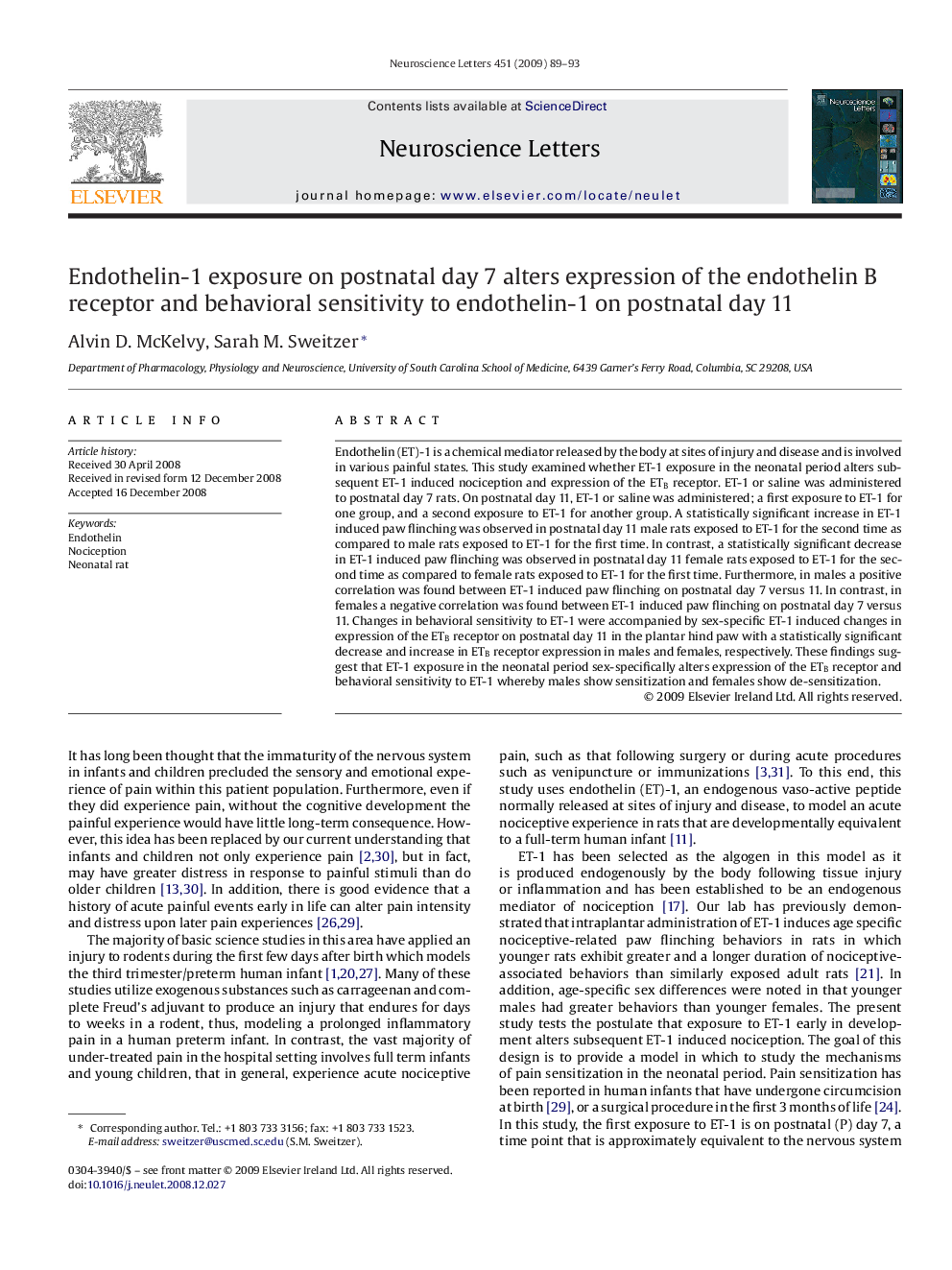| Article ID | Journal | Published Year | Pages | File Type |
|---|---|---|---|---|
| 4347828 | Neuroscience Letters | 2009 | 5 Pages |
Abstract
Endothelin (ET)-1 is a chemical mediator released by the body at sites of injury and disease and is involved in various painful states. This study examined whether ET-1 exposure in the neonatal period alters subsequent ET-1 induced nociception and expression of the ETB receptor. ET-1 or saline was administered to postnatal day 7 rats. On postnatal day 11, ET-1 or saline was administered; a first exposure to ET-1 for one group, and a second exposure to ET-1 for another group. A statistically significant increase in ET-1 induced paw flinching was observed in postnatal day 11 male rats exposed to ET-1 for the second time as compared to male rats exposed to ET-1 for the first time. In contrast, a statistically significant decrease in ET-1 induced paw flinching was observed in postnatal day 11 female rats exposed to ET-1 for the second time as compared to female rats exposed to ET-1 for the first time. Furthermore, in males a positive correlation was found between ET-1 induced paw flinching on postnatal day 7 versus 11. In contrast, in females a negative correlation was found between ET-1 induced paw flinching on postnatal day 7 versus 11. Changes in behavioral sensitivity to ET-1 were accompanied by sex-specific ET-1 induced changes in expression of the ETB receptor on postnatal day 11 in the plantar hind paw with a statistically significant decrease and increase in ETB receptor expression in males and females, respectively. These findings suggest that ET-1 exposure in the neonatal period sex-specifically alters expression of the ETB receptor and behavioral sensitivity to ET-1 whereby males show sensitization and females show de-sensitization.
Keywords
Related Topics
Life Sciences
Neuroscience
Neuroscience (General)
Authors
Alvin D. McKelvy, Sarah M. Sweitzer,
